For parents of children born with limb differences, one of the most important decisions early on is choosing the right kind of prosthetic. There are two main types: functional and cosmetic. Each serves a different purpose and supports the child’s development in unique ways. The choice depends on many factors—how the child moves, what they need help with, and even how they feel about their appearance. This decision isn’t just about technology—it’s about your child’s comfort, confidence, and future.
At Robobionics, we work closely with families across India to understand each child’s needs. Whether the goal is function, appearance, or a blend of both, our mission is to offer clear, supportive guidance. In this article, we explain what makes functional and cosmetic prosthetics different, how they are used, and how to choose what’s best for your child.
Understanding What Cosmetic Prosthetics Are
Cosmetic prosthetics are made to look like a natural limb. They usually don’t move or help with daily tasks. Instead, their job is to give the appearance of a complete limb. For some children, especially as they grow older and become more aware of how they look, cosmetic prosthetics help them feel more confident.
Designed to Match Skin Tone and Shape
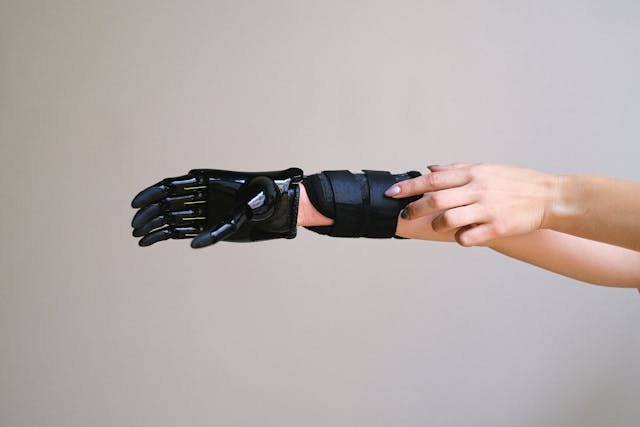
Cosmetic prosthetics are made with soft materials and shaped to resemble a hand, arm, leg, or foot. They are often custom-colored to match the child’s skin tone, and in many cases, they look very realistic. Fingers, toes, and even nails can be added to make them look more lifelike. These devices do not have moving parts, and their main role is to complete the body’s look.
Some children feel more comfortable when their prosthetic blends in, especially during social situations like school or public outings. It can help them feel more at ease when meeting new people or taking part in group activities.
At Robobionics, we carefully design cosmetic prosthetics to match the child’s body, offering a smooth, natural look while ensuring comfort and ease of wear.
Emotional Benefits for Some Children
For many children born with limb differences, especially those who are more sensitive about their appearance, a cosmetic prosthetic can support emotional well-being. It helps reduce feelings of being different, especially during early school years when fitting in feels important. Even though it doesn’t assist with movement, the psychological comfort can make a big difference in how the child sees themselves.
Wearing a cosmetic prosthetic can boost self-esteem and make the child feel more accepted. Some children even start with a cosmetic device before they are ready to try a functional one. It becomes a first step in the journey of understanding and accepting their body.
At Robobionics, we always listen to what the child wants and how they feel. If a cosmetic limb helps them feel strong, we make sure it’s done right—with quality, comfort, and care.
Limitations in Everyday Use
While cosmetic prosthetics offer emotional and aesthetic support, they don’t help much with physical tasks. They can’t grip, lift, or move on their own. For active children or those who want to use both limbs more equally, cosmetic limbs may feel limiting over time.
As children grow and begin exploring more physical activities, they may want a prosthetic that does more. This is when some families consider moving to a functional device. That transition can be smoother if the child already feels confident and comfortable with their appearance.
Robobionics provides regular follow-up and guidance, helping families know when it might be time to consider switching from cosmetic to functional options—or even combining both for different settings.
Understanding What Functional Prosthetics Do
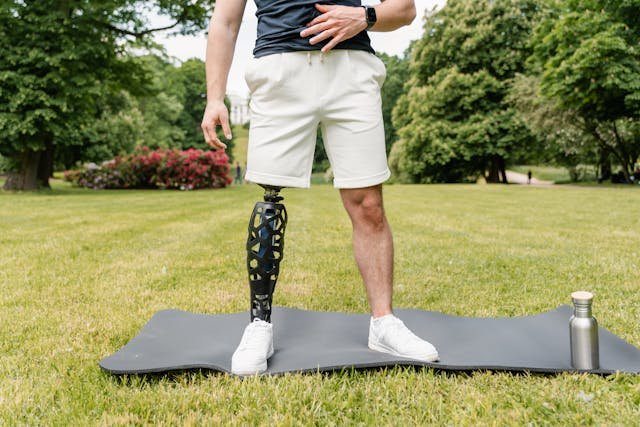
Functional prosthetics are built to help with movement and tasks. They are used to grip, support walking, write, hold objects, or assist in play and learning. These devices may not always look exactly like a natural limb, but they are designed to give children more independence.
Helping Children Use Both Sides of the Body
Children born with limb differences often learn to do things one-handed or with other parts of their body. This natural adaptation is incredible, but over time, it can create strain or imbalance. A functional prosthetic helps bring symmetry back into daily activities. It allows children to carry things, hold tools, or use both hands when playing or eating.
Functional limbs are especially helpful as the child grows and begins tasks like writing, dressing, or participating in games and sports. The prosthetic becomes a supportive tool—not just for movement, but for inclusion.
At Robobionics, we design child-friendly functional prosthetics that are easy to use, lightweight, and comfortable—even during long hours of play or learning.
Types of Movement and Control
There are different levels of function in these prosthetics. Some are body-powered and use straps or cables to open and close. Others are myoelectric, meaning they use small signals from the child’s muscles to move fingers or grip objects. These devices require more training but can be more natural once mastered.
Children who are very young often start with simpler body-powered devices. As they grow and their control improves, they may be ready for a myoelectric arm or hand. The key is to introduce the prosthetic at the right time, when the child is both physically and emotionally ready.
Robobionics provides training and home-based rehabilitation support to help children learn how to use their functional prosthetic step by step. Our goal is to make it feel like an extension of their body—not a burden.
Encouraging Confidence Through Capability
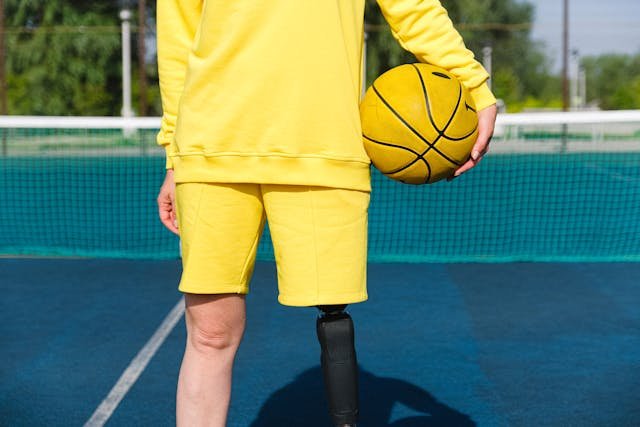
A functional prosthetic does more than assist with movement. It also builds confidence. When a child can tie their shoes, hold a bat, or eat independently using both hands, it changes how they see themselves. They start focusing on what they can do—not what they’re missing.
Parents often notice a big change once their child begins using a functional prosthetic regularly. There’s more energy, more motivation, and a stronger sense of pride in being able to keep up with friends or try new things.
At Robobionics, we celebrate every milestone—no matter how small. Whether it’s picking up a crayon or climbing stairs, each step is a win on the journey to independence.
Choosing the Right Option at Different Stages of Childhood
As children grow, their needs and preferences change. What works well at one age may not be the best fit later. For families of children born with limb differences, understanding how prosthetic needs evolve is key to making the right decision—whether it’s starting with a cosmetic limb, moving to a functional one, or even using a combination of both depending on the setting.
Infants and Toddlers: Gentle Introduction Matters
During the first year or two of life, the focus is often on comfort, posture, and balance. Children at this age are learning to sit, crawl, and explore their world. For many, a cosmetic prosthetic may be a helpful way to introduce the idea of a limb, especially if the child is sensitive to balance or body image from an early age.
Since infants don’t yet have the muscle control needed to operate a functional device, a soft cosmetic limb can provide symmetry and support during these early milestones. It also helps the child get used to the feeling of wearing something on the residual limb.
At Robobionics, we guide families through this gentle first step. We ensure early prosthetics are soft, light, and never restrictive, so the child explores freely and happily.
Preschool and Early School Years: Building Skills and Confidence

By age three to six, children become more physically active and social. They begin drawing, building, dressing themselves, and playing with others. This is a common age for introducing functional prosthetics that help with basic tasks. If the child is interested and ready, a body-powered device or a lightweight assistive hand can be a good fit.
This is also the age when children become more aware of their differences. Some may ask why they don’t have a full arm or hand like their classmates. Depending on their comfort, they might choose to wear a cosmetic prosthetic for appearance in social settings and a functional one for tasks at home or school.
Robobionics supports this dual-use approach. We help families create a balance that suits the child’s lifestyle, giving them choices that build both confidence and ability.
Older Children and Teens: Independence and Identity
As children enter pre-teen and teenage years, they often want more control over their appearance and daily routines. They may begin to express strong opinions about their prosthetic. Some may want more function to support hobbies or sports. Others may want a sleeker, more stylish design that matches their personal identity.
Myoelectric devices, which respond to muscle signals, are often introduced during this stage for those ready to take on more complex control. These devices offer precise hand and finger movement, supporting tasks like writing, cycling, or even musical activities. Teens may also ask for personalized colors, shapes, or accessories that reflect their style.
At Robobionics, we believe teenagers should be deeply involved in choosing their prosthetic features. We empower them to take ownership of their device, while also offering regular check-ins, upgrades, and maintenance support to match their growing independence.
Talking to Your Child About Prosthetic Choices
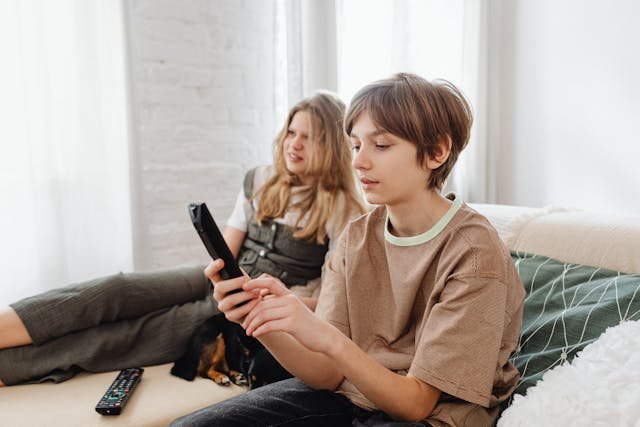
Choosing between a functional and cosmetic prosthetic isn’t only a medical decision—it’s also an emotional and personal one. As your child grows, involving them in conversations about their prosthetic helps build trust and confidence. Every child has their own feelings, fears, and dreams, and hearing them out ensures that the prosthetic truly supports their lifestyle and self-image.
Listening to What Your Child Feels and Wants
Children, even at a very young age, have opinions about what feels good, what looks right, and what makes them feel comfortable. Some might love a colorful, superhero-themed arm. Others may prefer a subtle prosthetic that blends in. Some kids will want to try something functional as soon as possible, while others may need more time before they feel ready.
It’s important to create space for your child to express themselves openly. You can ask how they feel when they wear their current prosthetic, what activities they wish they could do more easily, or what they like and don’t like about their device. Their answers may surprise you—and they may give you clear direction on what kind of prosthetic is best for their next stage.
At Robobionics, we include children in design choices whenever possible. When they’re part of the process, they feel a stronger connection to their prosthetic—and they’re more likely to use it with pride.
Helping Your Child Understand the Differences
Many children benefit from simple, honest explanations about the options they have. When they understand that one prosthetic helps them move and do tasks, and another helps them feel more confident in public, they can better understand why one or both might be useful. The goal is to help them make informed choices based on their own needs—not just what adults think is best.
You don’t need to overwhelm them with technical terms. Instead, talk about what the prosthetic can help them do. For example, you might explain that a functional arm helps with holding things or riding a bicycle, while a cosmetic one helps them feel more comfortable when meeting new friends.
At Robobionics, we offer educational support and child-friendly materials to help parents and kids understand prosthetic types in a clear, stress-free way.
Making the Decision Together as a Family
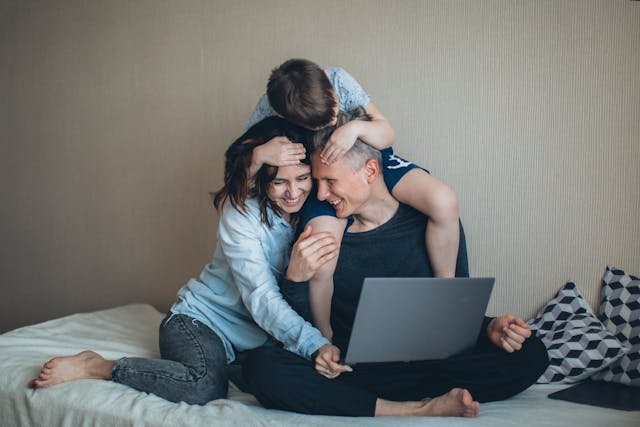
Ultimately, the best decision is one that takes the whole family into account. You know your child best. When you balance your insights as a parent with their growing independence and preferences, you can choose a prosthetic that fits their body, their stage of life, and their spirit.
Sometimes that decision means starting with cosmetic, then moving to functional. Sometimes it means trying both and switching depending on the activity. And in many cases, it means checking in regularly as the child grows, to see if their needs have changed.
At Robobionics, we stay with families through every part of this journey. We don’t just build prosthetics—we build long-term relationships to make sure each child always has the support, tools, and guidance they need.
Conclusion
Choosing between functional and cosmetic prosthetics for children born with limb differences is not a one-size-fits-all decision. It’s a journey—one that evolves with time, growth, and personal experience. Some children start with a cosmetic limb to feel more confident. Others begin with a functional device to build independence through movement. And many will explore both options as their needs, abilities, and self-awareness develop.
The most important thing is that the prosthetic supports your child—not just physically, but emotionally and socially as well. When children are involved in the decision-making process, they feel seen and heard. They begin to see their prosthetic not as something that sets them apart, but as something that helps them move, play, learn, and live more fully.
At Robobionics, we believe in empowering children and families with choices, not limitations. Whether your child needs a lightweight, cosmetic solution or a powerful, functional device—or a bit of both—we’re here to walk with you through every step. Our goal is to provide thoughtful, accessible, and child-friendly prosthetic care that grows alongside your child.
If you’re exploring prosthetic options for your child and unsure where to begin, reach out to Robobionics today.



